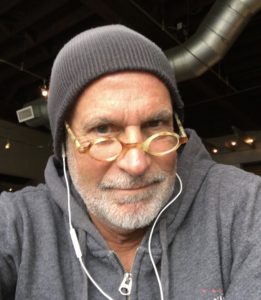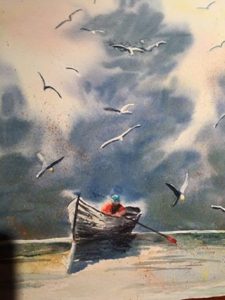VISIT ADVERTISER’S SITE
[sam_pro id=”1_45″ codes=”true”]
OUR SPONSORS ARE THE BEST!








How Surfing Helps Us Grieve

Article review by Glenn T Goodwin, PhD, DABFE
Life is something we live for and enjoy talking about. Death on the other hand, not so much. But death is inevitable and part of life for everyone. Death and dying reminds us of the reasons for living and for the community of surfers, the reasons are self-evident.  We live life in motion, connected to the rhythm of the weather, as it lives its life out here on our planet. For surfers, when one of us departs, we have a rather unique ritual of bringing the community together, often in full circle or gathered as a throng towards the middle, in an act of unity. We paddle out, join hands, make noise and splash as we pay tribute and commemorate. For many, its the beginning of the healing process.
We live life in motion, connected to the rhythm of the weather, as it lives its life out here on our planet. For surfers, when one of us departs, we have a rather unique ritual of bringing the community together, often in full circle or gathered as a throng towards the middle, in an act of unity. We paddle out, join hands, make noise and splash as we pay tribute and commemorate. For many, its the beginning of the healing process.
 I came across this article by Jake Tellkamp at Magicseaweed, it’s worth the time to read and contemplate.
I came across this article by Jake Tellkamp at Magicseaweed, it’s worth the time to read and contemplate.
Paddle outs are a powerful symbol of community for those grieving the loss of a loved one. The ocean gives surfers peace, a sense of identity and a present state of mind, which can be a positive outlet.
When a surfer dies, friends and family members paddle out past the lineup to form a circle around those closest to them as a gesture of solidarity. (No other sport mourns collectively in this way).
Avid surfer and psychologist, Dr. Patrick Nugent, says that paddle outs can help aid in the grieving process, “The ocean gives surfers peace, a sense of identity and a present state of mind, which can be a positive outlet to help reduce suffering and pain brought on by significant loss.”
Like most of surfing’s lore and tribalisms, paddle outs can be traced to the surfer’s Mecca, Waikiki, on the south shore of Oahu, Hawaii. Hawaiian culture believed that the spirit of a person, or their manna, rested in the bones of the deceased.
In order to assure that their final resting place was undisturbed, it was custom to hide the remains in secret caves. Those that honored the tradition, swore to never disclose the location. It was common for fishermen and those fond of the ocean, to have their bones placed in underwater caves and in holes in the reef. But, as for paddle outs, historians believe that they are more of a recent cultural development in the sport of kings.
After an influx of Christian and Buddhist foreigners, cemeteries and cremation became customary burial practices. Spreading ashes became so popular at Waikiki in fact, that local fishermen complained it was ruining their catch. It was in the turn of the 19th Century when Olympic Gold Medalist, Duke Kahanamoku, and the Hui Nalu, or Club Of The Waves, honored a dying surfer’s request to have his ashes spread at his favorite surf break. The name of the member whose life inspired the first paddle out has slipped through surf history’s pruney fingers tips.
While details are fuzzy, aspects of the first Hawaiian paddle out are still practiced today, much in part to the live webcast of The Eddie Aikau invitational opening ceremony. Surfers paddle out from the shore with flowers clutched between their teeth or with leis around their necks. As a group, they join hands to form a circle, where memories and condolences are shared. After a moment of silence, the group toss flowers to the circle’s centre, while splashing water and hollering above. While most paddle outs include the spreading of ashes, not all choose to do so publicly.
Being a part of a paddle out is moving, but when it’s a close family member or loved one who’s being celebrated, it can be life changing. “My dad’s paddle out was the best day of my life,” said Taylor Pitz, of Laguna Beach, Calif ornia. Her father, Marc, surfed in Southern California for 30-years, while owning a popular restaurant and being a devoted husband and dad.
ornia. Her father, Marc, surfed in Southern California for 30-years, while owning a popular restaurant and being a devoted husband and dad.
When Marc lost his battle to pancreatic cancer at 47-years-old, Taylor didn’t want to leave her bedroom in that first week after his death. The second week, the paddle out gave her something to prepare for and keep her mind occupied. When the day of her father’s memorial came, it had given her something to look forward to. The paddle out just so embodied who he was that it felt like that I shared the memory with him,” said Taylor. One year on from her dad’s passing and memories of surfing with her dad give her comfort.
Lori Franzen teaches Thanatology, or the study of death and humanity’s different burial practices to high school students in Orange County.  A mother of a surfer, Franzen has witnessed paddle outs from shore. “I love the circular (therefore singular) focus of the paddle out ritual. The invitation to join the circle is always open to any in the community; however, it is also a message of protection and ownership of the deceased and his/her family members. This is very powerful for the observers and the participants,” said Franzen.
A mother of a surfer, Franzen has witnessed paddle outs from shore. “I love the circular (therefore singular) focus of the paddle out ritual. The invitation to join the circle is always open to any in the community; however, it is also a message of protection and ownership of the deceased and his/her family members. This is very powerful for the observers and the participants,” said Franzen.
She added: ”Those who attend paddle outs, tend to have a more open world view when it comes to grieving. Instead of finding comfort that a person is in a fixed location, like a grave site, spreading of ashes in a larger area is more comforting, often, those drawn to this practice take comfort in the idea that their loved one is still physically present and surrounding them.”
As for if she thinks surfing can be therapy, Franzen said that, “any activity that focuses an individual when processing grief is beneficial”.
 Keep living life, keep your edge…
Keep living life, keep your edge…






